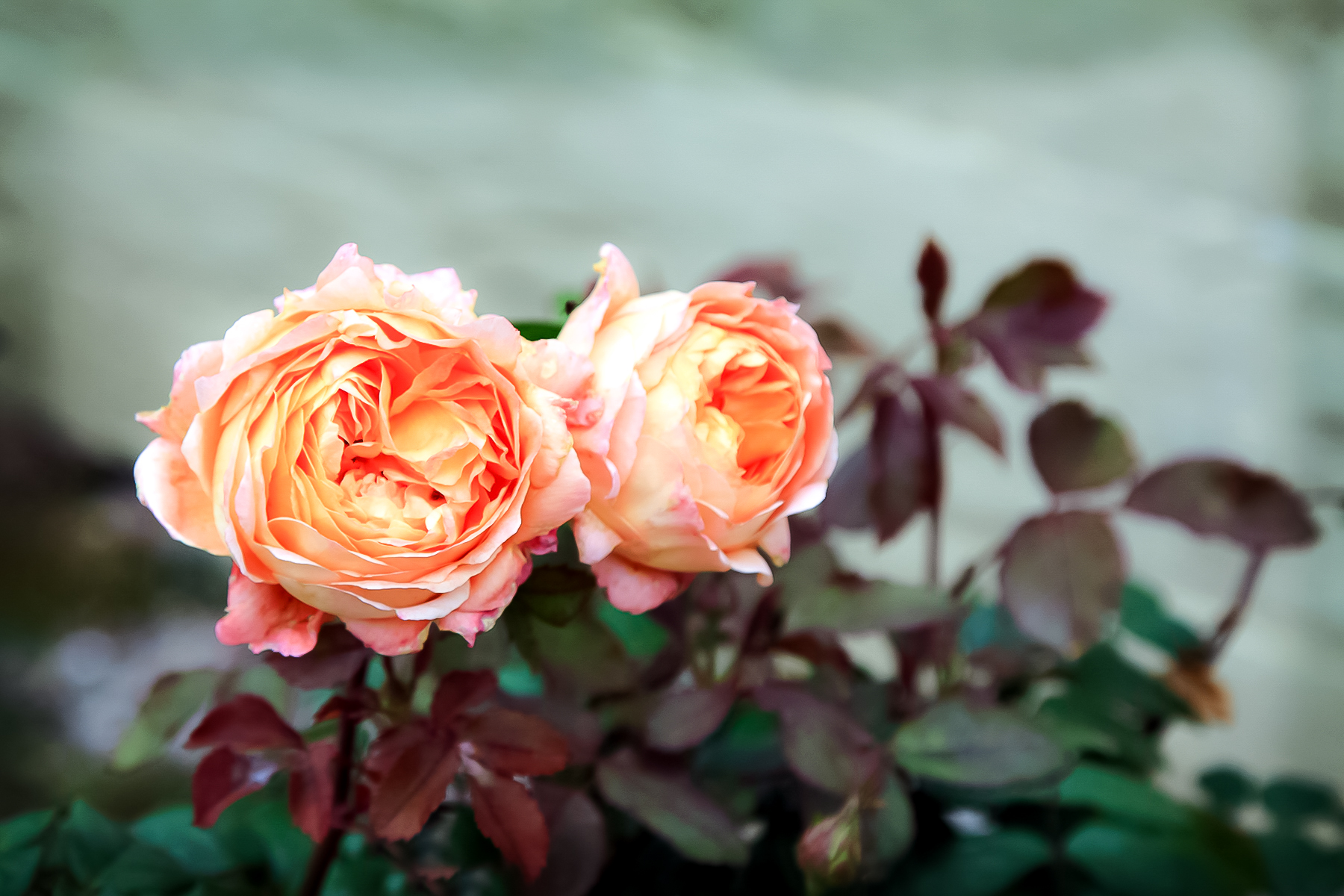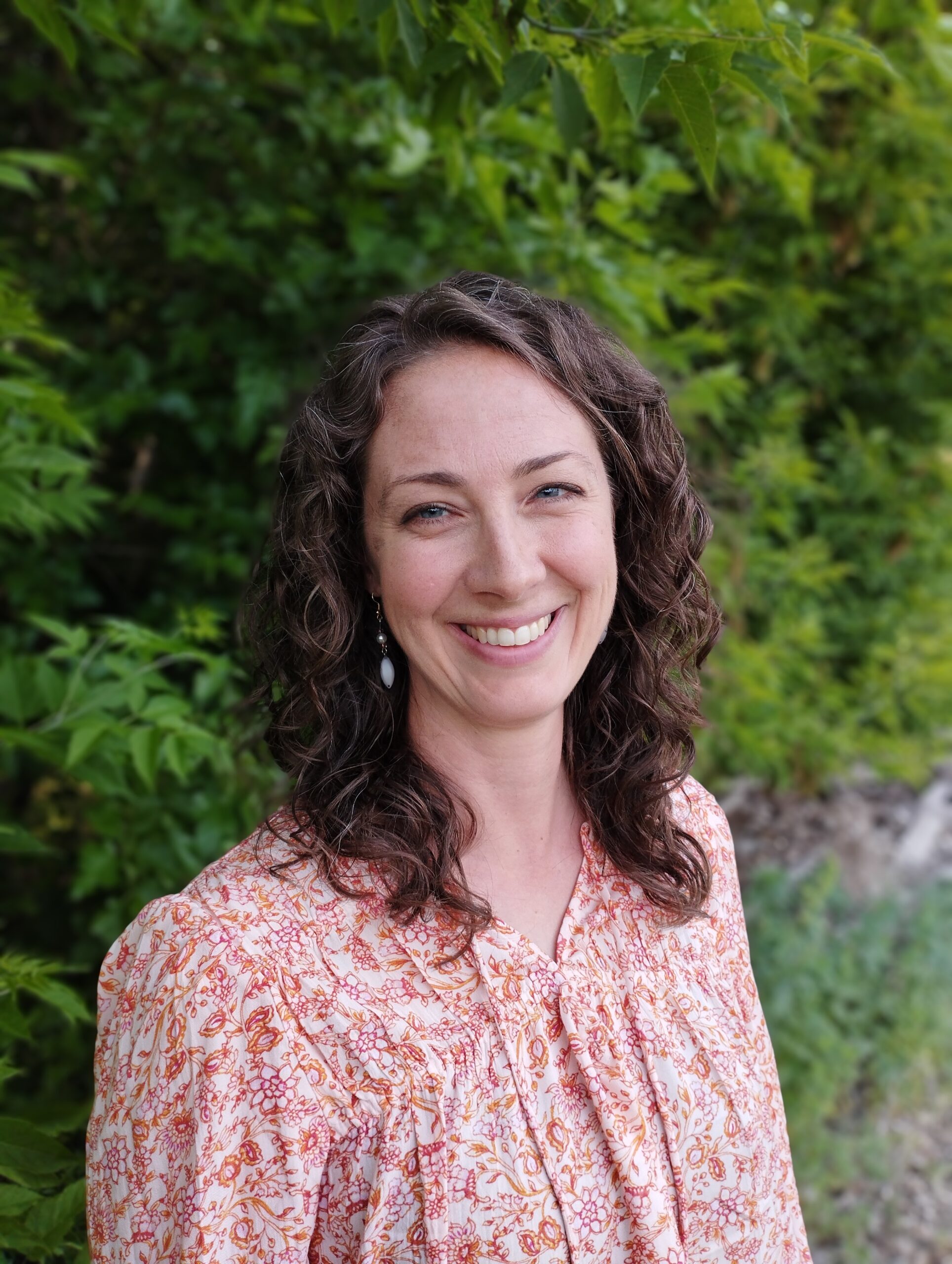The days are tantalizingly cool and fresh with the breath of autumn. The roses in my garden are crisp, fragrant nests of satin petals in tangerine and gold, cream faintly tinged with peach, striped burgundy and blood-red. After a few days — a breath, really — each bloom begins to shrink slightly, edges starting to dry and fade even while the dripline continues to water the roots. The beauties I cut yesterday for the kitchen table are still scenting the air with raspberry and lemon, but already the petals droop inward or curl backwards into triangles; soon, they will let go and drop limply to the tablecloth.
I open my mother-in-law’s tiny pocket edition of Daily Light, which she read from girlhood. The edges of the translucent pages are crumbling, but the narrow blue ribbon is still firmly affixed to the nearly hundred-year-old leather binding. Next to it, the entry for today reads:
“Surely the people are grass. The grass withers, the flower fades; but the word of our God shall stand forever. — The world passeth away… but he that doeth the will of God abideth forever.” [1]
This skin and sinew I am briefly inhabiting will pass away and turn into dust, but because the living Word has chosen to dwell in me, enabling me to “do the will of God”, my real self will “abide forever”. One day my Creator will reclothe me in a fantastic new body which will never fade — but for now, this one takes a lot of work! When I asked my teenage son why he thought God put souls into bodies, he paused and then responded, “Maybe so we would know what it feels like to be dependent on something?”
An astute observation. I for one, do not like being dependent. I doggedly resist any suggestion I might not have what it takes to do everything myself. For years I ignored what my body was trying to tell me about the state of my mind and heart, my stress levels, what drained or refreshed me. I would stay obstinately deaf until my anxiety reached such a state that my body would imprison me in a tension headache, dry-heaving all night long.
In her beautifully written guide to practical spirituality, Sacred Rhythms, Ruth Haley Barton spends a whole chapter exploring the connection between our mental and spiritual selves and our physical bodies. Our bodies have quite a lot to tell us if we can learn how to listen.
“In fact,” says Barton, “oftentimes God speaks to us through our bodies. Most times, our bodies are the first to know if we’re overcommitted, stressed, uneasy, or joyful, and when we need to attend to something that is causing us pain or disease.” [2]
About seven years ago, during recovery from family trauma and personal burn-out, I finally had to face my utter dependence on God even to get me out of bed each morning. I began to learn to listen to Him speaking through my bodily sensations, whispering calm to me through my senses, helping me notice the presence of anxiety through pain in my neck or knots in my stomach. Through paying attention to my body and caring for it more intentionally, I have grown more able to hear the voice of the One who inhabits it with me.
By choosing to make His home in our fragile, dependent bodies, God continues to make visible the life of Jesus through us. Paul tells us in Romans 1,
“For since the creation of the world God’s invisible qualities—his eternal power and divine nature—have been clearly seen, being understood from what has been made…” (Romans 1:20, NIV)
And in Paul’s letter to the Colossians we read that Jesus Christ, the Word of God wearing skin, is “the image of the invisible God” (Colossians 1:15, NIV) Only through a body — a face, with expressions, eyes that show emotion, gesturing hands, taste buds with preferences — can a soul’s intricate individuality become visible to other souls.
“Even now,” says Barton, “it is in these earthen vessels that the life of Christ continues to be made visible in our everyday lives. We carry within our bodies the treasure of the ministry that he has given us.” [3]
Through our individuality, the beauty of Christ shines forth in “ten thousand places”. [4]
The fact that something of God’s own soul can actually be seen through our bodies imbues them with something holy and wonderful. Originally, God intended these beautiful tripart mind-spirit-body creations, in their sinless state, to perfectly image His trinitarian being. After sin entered the world through those same bodies, God completed His plan to put on a body too, in order to once again make a perfect representation of Himself visible, tangible, available to us. While I find it difficult to admit the depth of my human need, in a mystery of self-emptying Jesus the embodied Son of God was perfectly, gladly dependent on His Father’s Spirit within Him. “My food is to do the will of Him who sent me,” Jesus said. “I only do what I see my Father doing.” (John 4:34, 5:19, NIV) As Barton says, “The incarnation itself — Christ’s choice to take on flesh and inhabit a human body — forever elevates the experience of embodiment to the heights of spiritual significance.” [5]
Since Jesus’ physical body returned to His Father’s side, it’s now my body that carries His Spirit through the world, in the company of my brothers and sisters. Each of us has our own unique way of embodying the image of Jesus; for me, I sense almost daily the urge to make. The Creator’s imprint sparks an idea in my imagination, and I find deep satisfaction in using my hands to embody it forth, watching it take shape before my eyes, however imperfectly. The first hundred attempts may get deleted or chucked in the rubbish, or tucked in a cupboard, or cut up and recycled into something entirely different, but the process of embodying feels vital to my survival and identity as a human.
It’s true I have no idea how long what I make will last. After all, time itself will come to an end one day, the current created order deteriorating like the withered petals dropping to my kitchen table. Most of what I create, if it does outlive me, will quite possibly molder into obscurity in some online vault or live out its quiet, unnoticed days on a dusty lower shelf. Does my embodying really matter? I sometimes ask, a bit disheartened. What’s the point, if it will just dissolve away in the end?
At the beginning of Anthony Doerr’s most recent masterpiece, Cloud Cuckoo Land, we meet a character who has grown up believing she is traveling to a planet far away from earth, a brave colonization experiment. As Konstance learns for the first time at the age of 10 that she won’t actually be alive when the ship reaches the planet for which it is bound — it will be her great-grandchildren who actually breathe the new planet’s air, build dwellings, plant gardens — the librarian on the Argos tries to encourage her:
”In time you will come to believe there is nobility in being part of an enterprise that will outlast you.” [6]
The effects of Jesus’ short sojourn in a body on this earth reach back to Adam and Eve, and forward to the Great White Throne and the bridal city descending for the wedding feast of the Lamb. His is the ultimate “lasting enterprise”. Еаch time I write words on a page, string words into sentences to tell a story, or speak words to another person, I am, in some mysterious and significant way, embodying the Word made flesh. When I tend a garden, I am living out the original intention of God for His first images: “The Lord God took the man and put him in the Garden of Eden to work it and take care of it” (Gen 2:15, emphasis added). When I craft a melody, I am searching to capture a faint echo of the song with which God sang the spheres into being.
To all makers, wordsmiths, weavers of melody or tapestry, pluckers of strings, blowers of horns or bagpipes or glass, shapers of clay and children’s hearts, planters of trees:
There is nobility in being part of an enterprise that will outlast you.
Regardless of how long my creations last inside the limited history of this planet, the effort of embodying beauty brings its own reward: the knowledge that I, in frail dependence on the living Word inside, am imaging forth God’s soul. I think He calls it good.
![]()
[1] Daily Light on the Daily Path: A Devotional Text Book for Every Day in the Year in the Very Words of Scripture, Morning and Evening Hour. London: Samuel Baxter & Sons, Ltd, 1926.
[2] Barton, Ruth Haley. Sacred Rhythms: Arranging Our Lives for Spiritual Transformation. Downers Grove: InterVarsity Press, 2006.
[3] Ibid.
[4] Hopkins, Gerard Manley. “As Kingfishers Catch Fire”. Gerard Manley Hopkins: Poems and Prose. Penguin Classics, 1985.
[5] Barton, Ruth Haley. Sacred Rhythms: Arranging Our Lives for Spiritual Transformation. Downers Grove: InterVarsity Press, 2006.
[6] Doerr, Anthony. Cloud Cuckoo Land. New York: Scribner, 2021.
The featured image, “Two Lady Emmas at Wollerton,” is courtesy of Lancia E. Smith and is used with her glad permission for Cultivating.
A writer, songwriter, and amateur music producer, Carolyn holds a Bachelor of Music from Wheaton College, where she pursued her twin passions for music and spiritual formation. Living overseas for the past twenty years has given her a keen interest in the connections between the inner life, the craft of making, and the art of sojourning, especially how tending her own soul affects her ability to tend the souls of others. Carolyn has contributed to an anthology of pandemic art, Beauty from Brokenness, and to Yet We Still Hope, a collection of honest, vulnerable essays by women serving overseas. You can connect with Carolyn and find her music and resources for the sojourning life at www.carolynbroughton.com.
Leave a Reply
A Field Guide to Cultivating ~ Essentials to Cultivating a Whole Life, Rooted in Christ, and Flourishing in Fellowship
Enjoy our gift to you as our Welcome to Cultivating! Discover the purpose of The Cultivating Project, and how you might find a "What, you too?" experience here with this fellowship of makers!


Add a comment
0 Comments